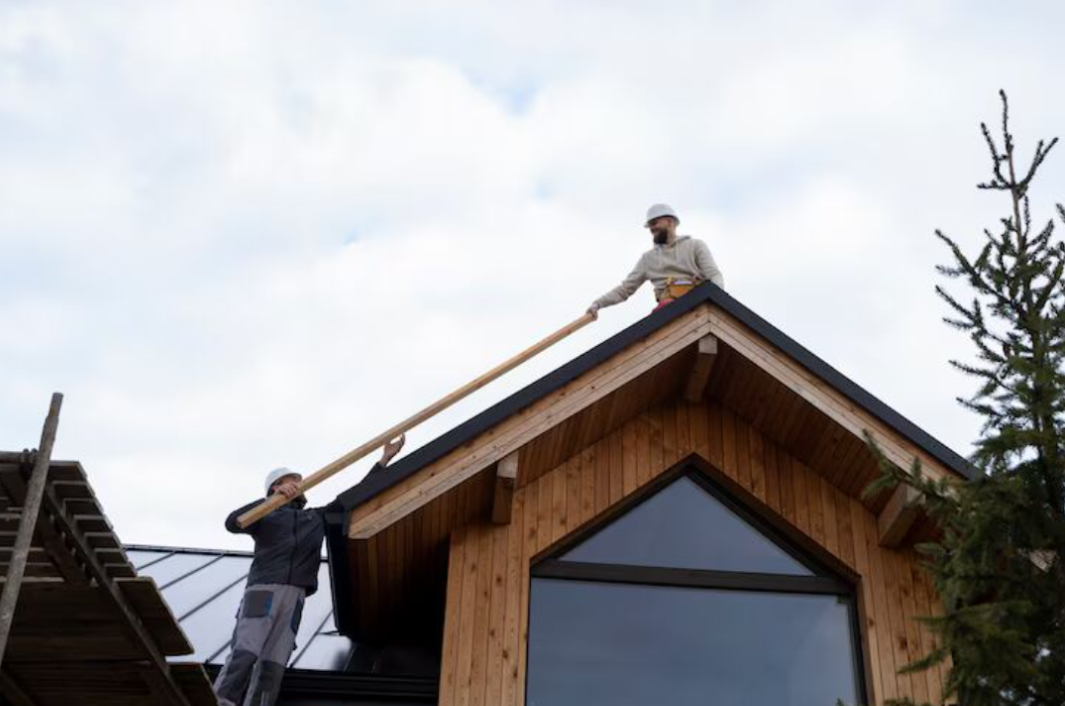
A Stepwise Guide for Easy Shed Roof Replacement
Your shed stores and protects a lot of things against inclement weather and theft, including garden and DIY tools, furniture, children’s toys, spare tires, and more. So, if its roof is getting old, starting to leak, sag, or missing many tiles, it’s time to get a new one. This write-up outlines the shed roof replacement process in detail, so you can handle the job on your own if required. With a variety of materials available these days – from felt, tiles, and shingles, to metal, rubber, and fiberglass – it is not only easy to install a new roof, but also control the shed roof replacement cost. Let’s delve deeper into what you need before getting started, the steps of replacement, safety measures, and costs.
Essential Tools and Materials
These are the key items you will need for a shed roof replacement job:
- Roofing felt (or any other material as per your choice)
- Fascia boards (cut to match the roof’s size)
- 40mm wood nails
- Felt nails
- Ladder
- Hammer
- Tape measure
- Builder's knife
- Straight edge
- Pencil
Assessing the Amount of Felt
Felt for shed is usually available in meter rolls and different sizes. So, assessing the quantity needed beforehand can prevent waste of material and also help budget the cost to replace shed roof. So, measure your shed roof’s size with a tape measure (in sections, ideally) before purchasing the felt. Note that you will need a 75mm overhang at the ends of the gable and a 50mm overhang at the eaves. Also, buy a little extra felt to deal with repairs or touch-ups.
Safety Tips
Now let’s look into the actual process of installing the ridge cap that most companies offering commercial and residential roofing services follow. To get onto the roof, put on your safety harness correctly, position the ladder safely, climb up, and ask a friend or neighbour to send up the tools via a pulley system. Then follow these steps.
- Wear goggles, safety gloves, a dust mask, and closed shoes with ample grip. Avoid loose clothes that might get caught in something.
- Keep children away from the work area.
- Use a top-quality and sturdy ladder that won’t skid and can support your weight easily.
- Check the surrounding area to make sure the ground is stable or if you need to get rid of any debris or cables.
- Avoid doing the job during snowfall, heavy rains, or hailstorms.
Getting Started
Do what any experienced company for roofing in London does to start the replacement job correctly. Set up the ladder on hard, stable ground and ask a friend to hold the base for additional security. Position it for easy access to the roof. Wear a tool belt to keep the measuring tape, hammer, nails, etc. close at hand.
Removing the Old Roof
Before you install a new roof for shed, follow these steps to get rid of the old one:
- Remove Old Fascia Boards: Use your hammer for this and avoid damaging the rest of the roof’s structure.
- Get Rid Of the Nails: Pull up the existing nails with a claw hammer, while pressing down the current felt. You might need pliers in case the nails are old and rusty.
- Strip Away the Old Felt: After removing the old felt sheets, make sure there are no nails or debris left behind.
Installing the New Roof
We are now at the most important leg of the shed roof replacement process. And these are the steps to follow:
- Mark Up the Roof: This will serve as an installation guide. Use the tape measure to mark from where you will start installing the pieces of felt and do it at both ends of the roof. Using the straight edge, draw a line across the roof’s full length, thereby connecting the mark-ups.
- Cut Felt Pieces: With a builder’s knife, cut the felt pieces according to the measurements. Roll out the felt sheet on a flat surface and mark the point at which you will make the cut. Use a tape measure for this. The cut should be across the width of the felt sheet and straight and smooth.
- Set up the First Piece: Begin from one side of the shed and install the first felt piece across the roof side’s span. Ensure the alignment is accurate along all the edges. Once you are satisfied with the positioning, use nails and the hammer to fix the felt piece in place. Remember the overhangs at the eaves and gable.
- Focus on the Other Side: Measure the other side in the same way as detailed above and cut the amount of felt you need from the roll. You can use multiple sections of felt to cover the roof adequately.
- Secure the Second Felt Piece: Accounting for the 75mm overhang at the ends of the gable, install the second piece of felt. If installing multiple pieces, ensure there is a slight overlap between each piece. This means you need to overlap the top piece with the section installed previously on the other side. This way, rainwater won’t get inside the sheets while running off.
- Drive Nails Along the Eaves: Measure intervals of 100mm with your tape measure along the eave and drive in the felt nails with the hammer. To ensure the felt is fitted securely, repeat the exercise for the bottom section.
- Get the Overhang Right: This is a crucial part of the shed roof replacement process. In overhang’s centre point, make a cut with the builder’s knife. Fold it down and affix the overhang to the shed’s side with felt nails at 100mm intervals.
- to the shed’s side with felt nails at 100mm intervals. Secure Fascia Boards: This has to be done to the front of the shed with the aid of 40mm wood nails and a hammer. Drive in the nails partially to ease repositioning later. Once the alignment of boards seems perfect, secure the nails completely.
- Get Rid of Excess Felt: Use the builder’s knife to trim any extra felt hanging below the fascia. Then tuck the felt hanging over the eaves’ edges under the overlay. To hold it in place, use felt nails.
Average Cost to Replace a Shed Roof
The cost of replacing shed roof largely depends on the roof size, type of material, and the quality of the material. Per square metre, felt is usually the cheapest, at around £3, while rubber is a little more expensive at about £6.50. Felt tiles can cost around £10, while metal roofing sheets cost around £12. Fiberglass is about £15 on average and clay tiles are the costliest at around £40.
What you spend also depends on labour charges and the degree of complication in terms of removing the old roof and installing the new one. For instance, the cost of flat roof replacement is usually lower than peaked ones, as it involves less risk and effort. If there is structural damage in the existing shed roof, fixing the same before replacement will be more expensive too.
Conclusion
While you now know all about shed roof replacement, it can be a daunting project to handle on your own. To minimise stress and save time and energy, consult a reliable and reputed provider of residential and commercial roofing services in London. They will not only know the specific nuances of replacing a shed’s roof, but can also advise you on the ideal material type and quality based on your preference and budget. They will also have the best tools and equipment to get the job done properly and make sure the site is neat and aesthetic after the roof is replaced. An experienced provider of commercial and residential roofing services like FastRoofing can especially help. Get in touch with the experts here to discuss your requirements today.
